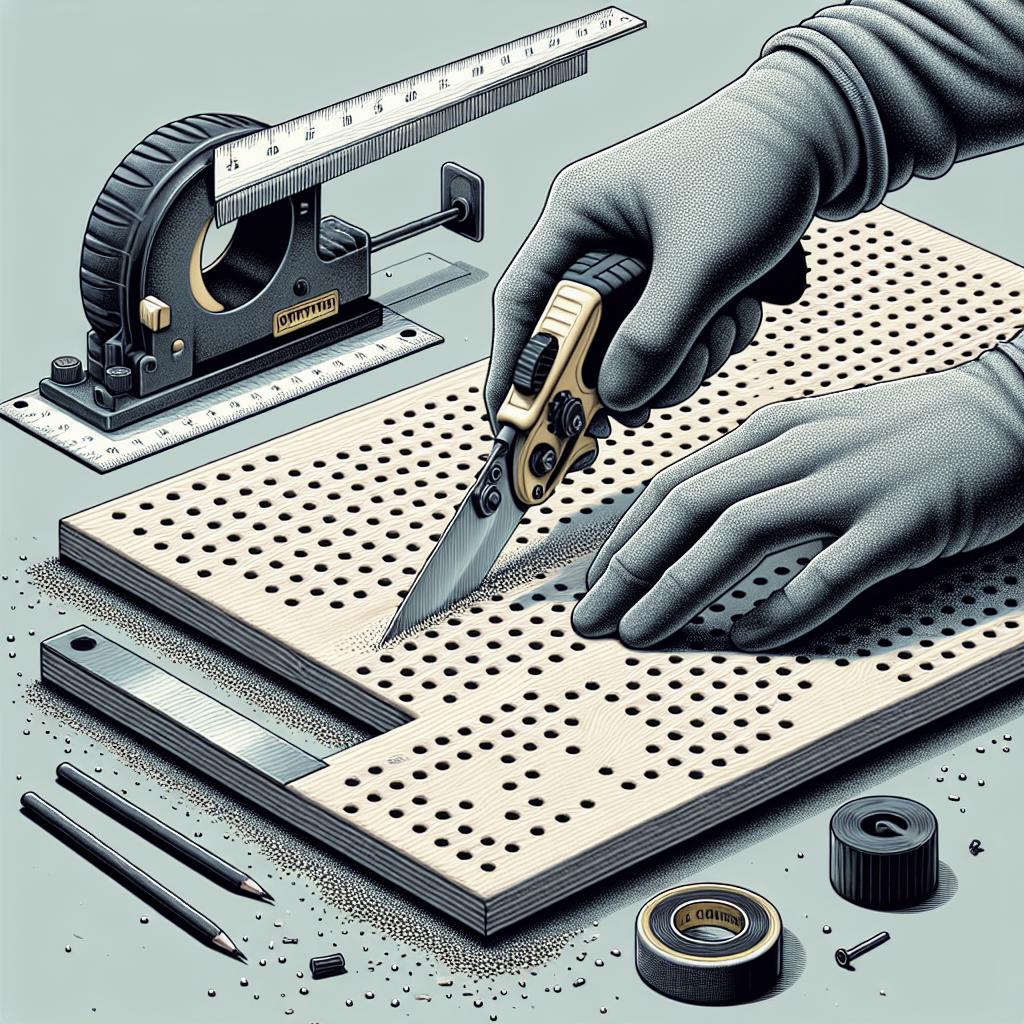“`html
Introduction: Cutting PVC in a Tight Spot
When it comes to cutting PVC pipe, the first tool that often comes to mind is a saw. However, there are situations where you might not have access to one or where using a saw is impractical, especially in tight spaces. Fortunately, there are alternative methods that can effectively do the job. This blog post will take you through a step-by-step process on how to cut PVC pipe without a saw, using a simple nylon string. Whether you’re a DIY enthusiast or a professional, this guide will save you time and effort, providing you with an invaluable skill.
Step 1: Get Nylon String
Before you start, you’ll need to gather the right materials. A piece of nylon string, approximately 3 feet long, will be your primary tool for this method. Nylon string is durable, flexible, and surprisingly effective at cutting through PVC. You can find this string at most hardware or craft stores, and it’s a versatile material that can also be used in a variety of other DIY projects. In addition to the string, it’s essential to have safety gear like gloves and safety glasses to protect your hands and eyes from any particles or sharp edges. While this method is generally safe, it’s always wise to take precautions. Once you have your nylon string and safety gear ready, you’ll be prepared to start the cutting process.
Step 2: The Process
Begin by marking the spot on the PVC pipe where you want to make the cut. Use a marker or pen to make a clear, visible line. This will act as a guide to ensure that your cut is precise. Place the marked pipe in a secure position using a vise or clamps. Secure positioning will help minimize movement and make the cutting process smoother. Next, loop the nylon string around the pipe at the marked spot. Hold the string firmly with both hands, ensuring that each end of the string is evenly positioned on either side of the pipe. You’ll need a bit of muscle power for this, so ensure you’re in a comfortable position.
Step 3: Back View
Once you have the string in place, it’s crucial to get a good grasp of the back-and-forth motion required for cutting. Begin by pulling the string in one hand towards you while the other hand pushes away. This sawing motion, when maintained steadily, will start to create friction against the PVC pipe, eventually cutting through it. Try to keep the motion as smooth and continuous as possible for an even cut. From the back view, you’ll see that the loop of the string continuously moves along the marked line, creating a neat incision. It’s essential to apply consistent pressure during this process. If you notice the string is wearing out, simply readjust or get a new piece of string to continue.
Step 4: It’s Working!
You should soon notice that the string begins to cut into the pipe. The PVC will start to create a small groove as you continue with the sawing motion. This stage is crucial as it demands a bit of patience. The secret here is not to rush and let the friction created by the nylon string do its job. As you get deeper into the pipe, the string might encounter small difficulties navigating the cut. When this happens, adjust your angle slightly or shift your grip to ensure that the string stays within the groove. Watching the cut deepen steadily is a rewarding indicator that your efforts are paying off.
Step 5: The Finale
As the string makes its way further through the PVC, you’ll find the cut reaching its final depths. This is where the process requires a bit more control to ensure a clean finish. Maintain steady pressure and a smooth sawing motion until you feel the string has nearly reached the other side of the pipe. Ensure you keep the pipe stable during these final moments to avoid any sudden snaps or breaks that could damage your work. Any remaining string tension can be crucial in making that perfect, clean cut without leaving jagged edges.
Step 6: Done
Once the string cuts through the entire PVC pipe, you’ll hear a satisfying snap, indicating your job is done. Carefully remove the string and inspect the cut line for any rough edges. Sandpaper or a deburring tool can be handy at this stage to smooth out any imperfections. You have now successfully cut a PVC pipe without using a saw! This method is particularly useful in tight spots where traditional tools might fail. It’s a straightforward yet effective solution that leverages simple materials and smart techniques to get the job done efficiently.
Final thoughts
Cutting PVC pipe without a saw may seem daunting at first, but with the right materials and technique, it’s entirely feasible. This alternative method using nylon string proves to be a practical solution for those tricky situations where a saw isn’t an option. We’ve explored each step in detail to ensure you have the confidence and know-how to tackle this DIY task with ease.
| Step | Description |
|---|---|
| Step 1: Get Nylon String | Gather a piece of nylon string and safety gear. |
| Step 2: The Process | Mark the pipe, clamp it down, and loop the string around. |
| Step 3: Back View | Use a back-and-forth sawing motion to start cutting. |
| Step 4: It’s Working! | Maintain consistent pressure and control to deepen the cut. |
| Step 5: The Finale | Finish the cut by keeping the pipe stable and using smooth motions. |
| Step 6: Done | Complete the cut and smooth any rough edges. |
“`


